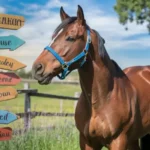Cats and dogs have a fascinating and complex relationship. While they may share the same home, their communication styles and perceptions of one another are vastly different. Have you ever wondered, what names might a cat call the dog if it could speak? While we can’t ask our feline friends directly, we can certainly explore the ways cats view their canine counterparts and what kinds of “names” they might assign based on their behaviors and interactions.
How Cats Perceive Dogs
Cats see dogs through their instincts and territorial nature. While dogs are social, cats are more independent and cautious. A cat may view a dog as a threat, a nuisance, or a tolerable companion, depending on its behavior.
Cats quickly notice patterns. If a dog frequently chases or barks at them, the cat might see it as an intruder. A calm and respectful dog, however, may earn tolerance over time. These interactions shape the mental “names” a cat might assign to a dog.
Understanding Feline Perception
Cats and dogs communicate in distinct ways, leading to misunderstandings but also opportunities for mutual respect. Cats tend to see the world through a lens of territory and hierarchy, while dogs are often more social and eager to please their human companions. Because of these differences, a cat might categorize a dog in ways that align with its own worldview.
Possible “Names” a Cat Might Use for a Dog
Based on feline behavior and their tendency to assign roles to others, here are some potential names a cat might call the dog:
- “The Loud One” – Many cats find dogs noisy and boisterous, which might lead them to think of their canine housemate as a creature of constant disruption.
- “Clumsy Paws” – Cats are graceful, while dogs can be a bit more reckless. A cat observing a dog knocking things over might dub them “Clumsy Paws.”
- “The Big Tail-Wagger” – Dogs express emotions through their wagging tails, something that cats often find puzzling.
- “Food Thief” – If a dog has ever stolen a cat’s food, this might be the name a feline gives in frustration.
- “The Chaser” – If the dog enjoys a good game of chase, the cat might think of them as “The Chaser,” whether as a friend or an annoyance.
- “Drooly Face” – Many dogs drool, which a cat would find strange and possibly unappealing.
- “The Intruder” – If a cat was there first, it may see a newly introduced dog as an invader in its territory.
- “The Overgrown Puppy” – Cats might view dogs as perpetual puppies due to their playful and sometimes immature behavior.
- “The Attention Hog” – A cat might name a dog this if it constantly competes for human attention.
The Psychology Behind Cat Naming
While these names are playful, they reflect a deeper truth about feline cognition. Cats use associative learning, meaning they categorize based on repeated interactions. A cat might “name” a dog based on its most prominent behaviors, much like humans give nicknames to people based on their quirks.
How Cats Recognize Others
Cats recognize familiar animals by scent, body language, and routine rather than by names in the human sense. However, a cat might create mental labels for different beings in its life. It may not vocalize them, but these labels influence how a cat interacts with a dog.
Do Cats Understand Dog Behavior?
Cats and dogs interpret body language differently. A wagging tail in dogs usually signals excitement, while in cats, it can indicate irritation. Likewise, direct eye contact is a sign of dominance for cats, while dogs often view it as a friendly interaction. These differences can lead to confusion and further reinforce the mental “names” cats assign to dogs.
Practical Tips for Improving Cat-Dog Relationships
If your cat and dog live together, fostering a positive relationship is essential. Here are some tips:
- Respect Boundaries – Allow the cat to have high places to retreat to when needed.
- Slow Introductions – Let them meet gradually to avoid stress.
- Positive Reinforcement – Reward calm interactions with treats or affection.
- Separate Feeding Areas – Reduce tension by feeding them in different locations.
- Observe Body Language – Watch for signs of stress and intervene if necessary.
- Provide Escape Routes – Cats feel safer when they know they can leave a situation if needed.
- Supervise Early Interactions – Ensure the dog doesn’t overwhelm the cat during their first few meetings.
Common Mistakes to Avoid
Even well-intentioned pet owners can make mistakes when fostering a cat-dog relationship. Here are some pitfalls to avoid:
- Forcing Interaction – Let the animals decide when they’re comfortable approaching each other.
- Ignoring Territorial Instincts – Cats value their personal space, and encroachments can cause anxiety.
- Overlooking Social Cues – Dogs and cats express emotions differently, so learning their signals can prevent misunderstandings.
- Neglecting Individual Personalities – Just like people, every pet has a unique temperament that affects how they interact with others.
- Not Addressing Jealousy – If one pet feels neglected, it can create resentment toward the other.
- Skipping Training – Teaching your dog basic commands like “leave it” can help prevent chasing or harassment.
- Underestimating Play Preferences – Cats and dogs play differently. Encourage appropriate interactions to prevent accidental conflicts.
Conclusion
While we may never know what names might a cat call the dog with certainty, understanding feline perspectives offers insight into their unique relationships. Whether your cat sees your dog as a “Chaser,” “Food Thief,” “The Intruder,” or simply “The Big Wagging One,” recognizing their dynamic can help foster a more harmonious household. By respecting each pet’s needs and encouraging positive interactions, you can ensure a happy and balanced home for both your cat and dog.










